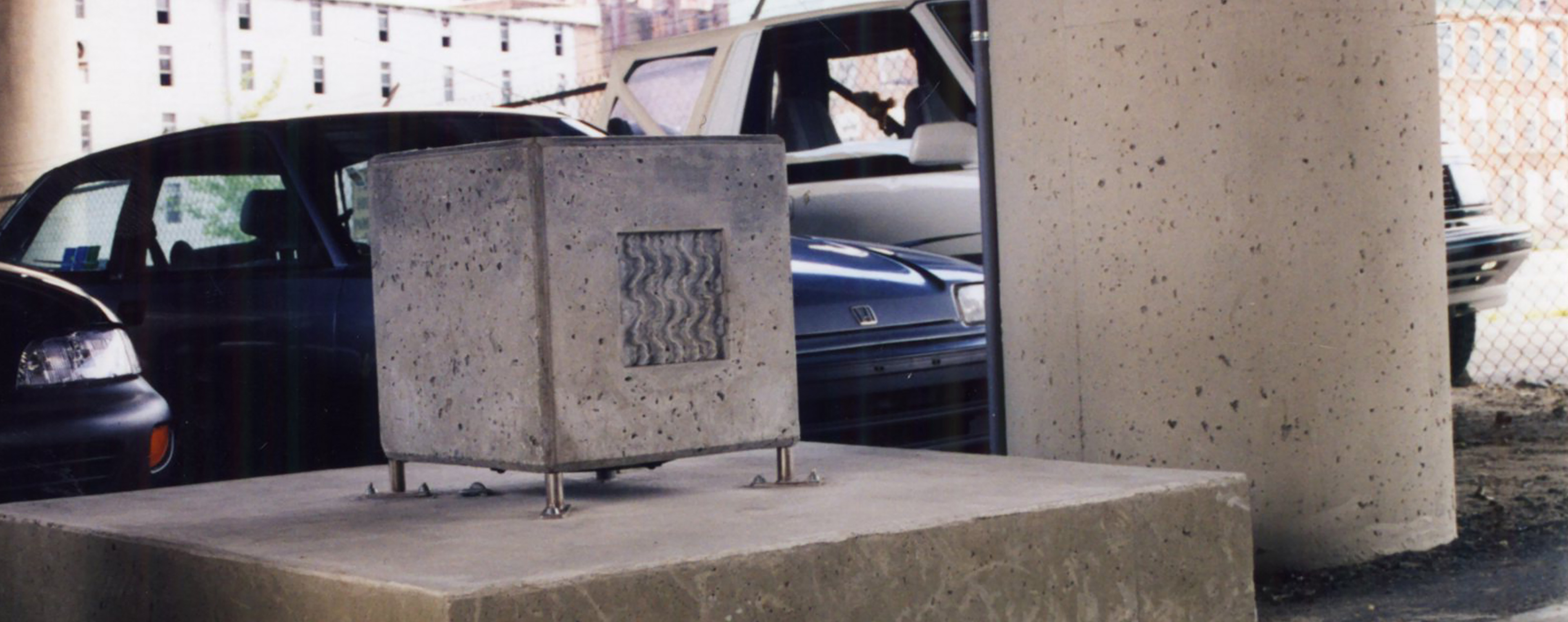 Exhibition
Exhibition- On view now
- Marshall Street
Plays from 8am to 10pm under the Route 2 overpass on Marshall Street, at the southeast corner of MASS MoCA’s main parking lot.
In the MASS MoCA portion of this multi-part project, Harmonic Bridge, low sounds roll and drone under the Route 2 overpass half a block from MASS MoCA. Entering the space under the bridge, one becomes aware of a turning eddy of sound in the midst of intersecting streams of traffic. Cars pass by heading north or south on Marshall Street and east or west on the Route 2 bridge, but this linear motion is counterpoised by a rolling humming in the key of C, as calming as the rhythm of ocean waves. Although cars stream by, pedestrians lose the impetus to move forward, momentarily derailed by a cool pool of sound with its mysterious, chant-like hum. Harmonic Bridge presents an aural cross-section of North Adams, a slice of the city in the key of C, comprised of the fundamental note and its overtone series.
To produce these rolling tones, artists Bruce Odland and Sam Auinger affixed two 16-foot tuning tubes to the guardrail on the north side of the bridge on either side of the overpass. The length of the tubes determines the fundamental tone: a sound wave at such a low pitch is 16 feet long and must be generated (whether for sound art or a pipe organ) with a 16-foot tube. Inside each tube, a microphone is placed at a certain harmonic interval (the 5th in one tube, the 4th in the other). These locations accentuate the harmonic and give a slightly different timbre to the two Cs. (The difference in timbre between the two tuning tubes is analogous to the difference in timbre between a cello and a violin playing the same note: though the pitch is the same, the sound is slightly different).
As traffic passes by, its noise generates a sympathetic resonance in the columns of air inside the tubes. High-pitched sirens and even voices generate higher harmonics, while the low rumble of trucks creates low ones. The sound is carried from the microphones in the tubes to a control room, where the sound signal is then amplified and transmitted to the concrete cube speakers under the bridge. There are no electronic effects added. The sounds have been simply extracted from the traffic noise above, as one might extract precious metal from a baser substance. The pedestrian hears one tuned layer of city sounds, and strains to separate the harmony from the traffic on Marshall Street. The work requires that we focus our ears on it, and we walk away from the experience as the composer John Cage would have us: hearing music everywhere. The bridge becomes an instrument played by the city revealing hidden harmonies within the built environment.


